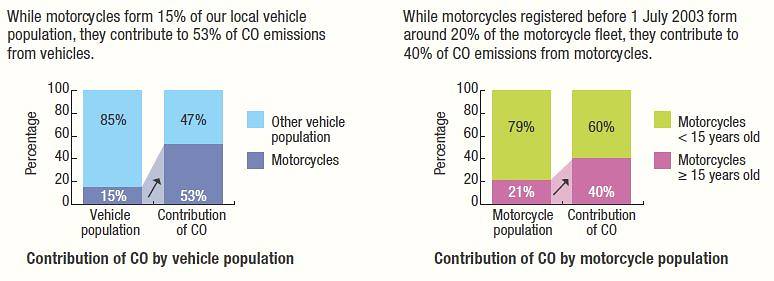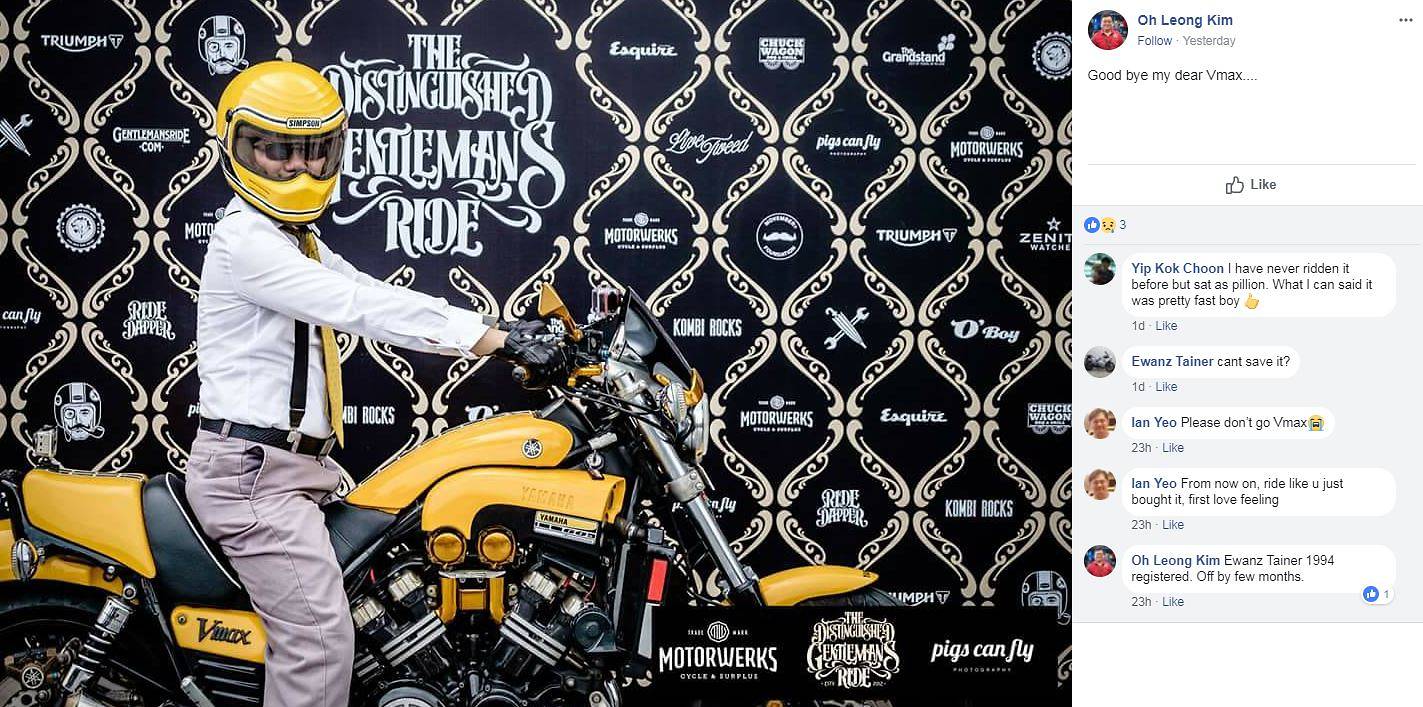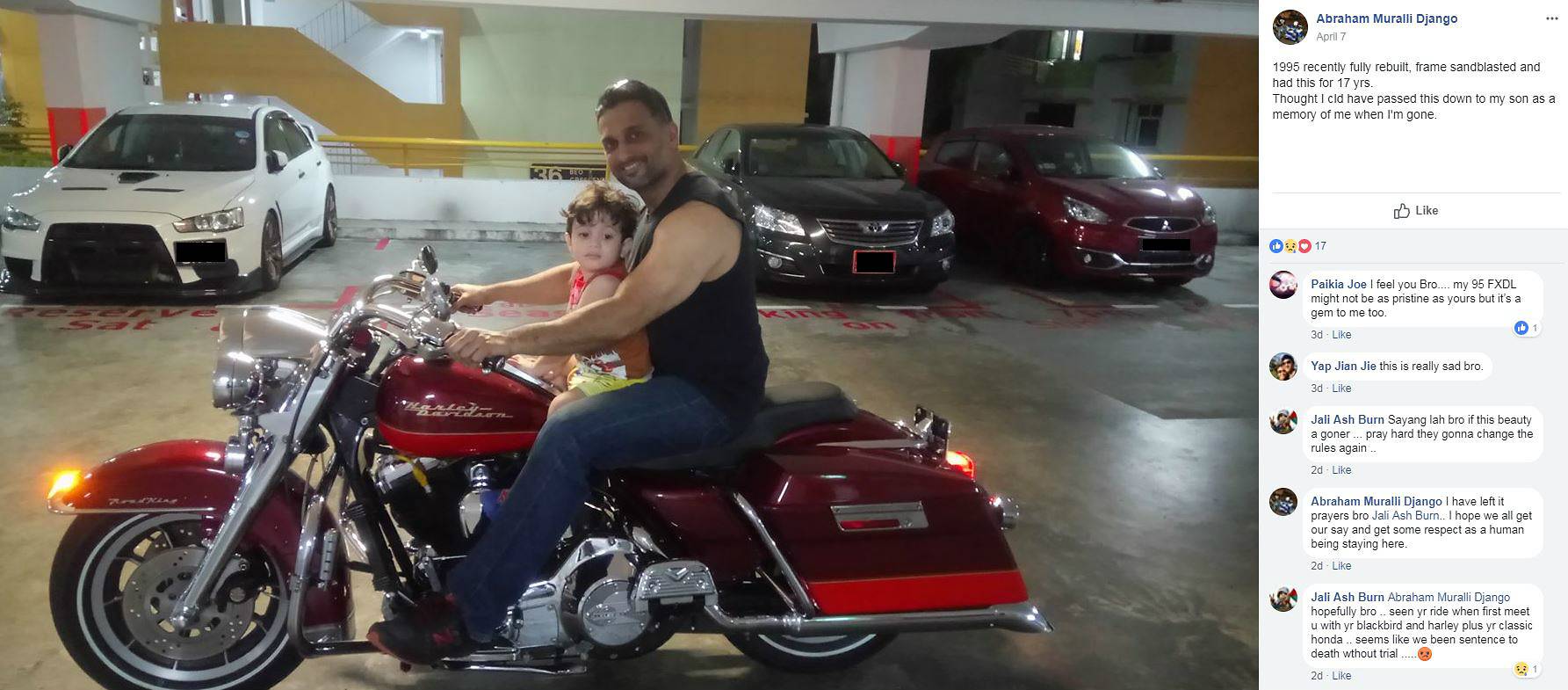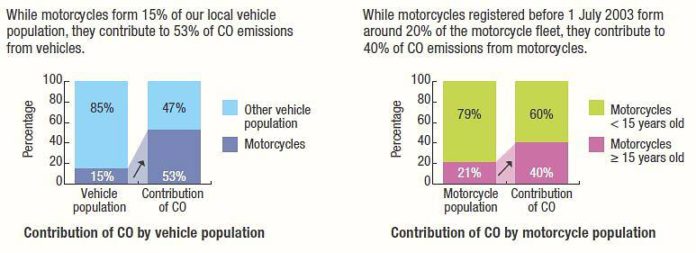SINGAPORE: When Mr Joseph Tan, 45, bought his 2003 Triumph Bonneville T100 more than three years ago, he found it in poor shape.
The banking executive spent close to S$5,000 refurbishing and customising it to his taste, finally calling it his “pride and joy”.
Mr Tan has taken the Triumph, a 100th anniversary model that’s believed to be the only one in Singapore, to bike gatherings at home and abroad. It always attracts attention, he said. “It brought me not only to places, but also I made lots of friends through it.”
So when the National Environment Agency (NEA) announced on Apr 6 that motorcycles registered before Jul 1, 2003 would be banned from the roads after Jun 30, 2028, Mr Tan was distraught. His bike was registered on Jun 28, 2003, just three days before the cut-off date.
“Many of us had the same dream, which is to hand down our precious bikes to our children,” said Mr Tan, who also runs the Custom Bikes Xchange Facebook group. “But with this ruling, this is down the drain.”

A graphic describing the amount of carbon monoxide pollution from motorcycles. (Source: NEA)
The NEA is trying to reduce emissions from some 27,000 older motorcycles as part of a push to meet Singapore’s air quality targets by 2020. Owners of older motorcycles have been offered up to S$3,500 to de-register their bikes within the next five years. Beyond that, emission standards for such motorcycles will be tightened, before the 2028 ban kicks in.
These initiatives come as NEA figures indicate that older bikes emit up to 30 times more pollutants than new bikes. They also contribute 40 per cent of the total carbon monoxide emitted by motorcycles on the road.
But Mr Tan questioned NEA’s data, suggesting that it “relies on a lot of assumptions and hypothesis”.
Furthermore, he added, all motorcycles regardless of age go through the same inspection and emissions test. “Then why target pre-2003 bikes now and with date of registration as the only criteria?”
Singapore Motor Cycle Trade Association (SMCTA) secretary-general Norman Lee said in a statement that it was concerned with the figures, pointing out that the “realistic road usage” of motorcycles must be taken into account.
“SMCTA is seeking more information on these data results from NEA,” he said.
In response to queries from Channel NewsAsia, NEA said it considered the population of motorcycles, their respective emission standards, mileage travelled and other factors affecting emissions like engine size when estimating motorcycle emissions.
Explaining its rationale for the Jul 1, 2003 cut-off date, NEA said Singapore adopted Euro 1 type approval standards for new motorcycles on that date. Motorcycles registered before that are more pollutive than newer models which comply with the Euro 4 standard, it added.
The agency reiterated that phasing out older motorcycles and implementing more stringent emission standards will reduce pollutants that cause nausea and impair vigilance and respiratory functions.
“While such standards can encourage owners to maintain their motorcycles well, a new motorcycle is still significantly cleaner than a well-maintained older motorcycle,” it stated. “This is because the new motorcycles must meet even more stringent emission standards and are fitted with improved vehicular technologies, such as catalytic converters.”
DECADES OF MOTORCYCLES “DESTROYED”
A further concern, Mr Tan said, is that the pre-2003 category includes rare bikes like the Ducati MH900e and Yamaha VMAX 1200. “For owners of these bikes, it might be an investment in the long term,” he added, noting that such bikes can hit almost six figures in price.
Mr Yap Jian Jie, who runs the biker Facebook group Gasoline Addict, said many in the category are “instant classics”. “You’re getting guys whose machines have history and character,” he said. “They are from a time when the manufacturers were going all experimental.”

Motorcycle owners affected have been posting pictures of their bikes on social media. (Screengrab: Facebook/Oh Leong Kim)
Some of these bikes, however, will be able to stay on the roads after the ban – provided they are converted under the Classic Vehicle Scheme, which allows vehicles to be used for up to 45 days in a calendar year.
But there is a catch: To qualify for the scheme, the bikes must be at least 35 years old from their original registration date. This means that when the ban kicks in in 2028, affected bikes registered after June 1993 will not qualify.
“Almost two decades of bikes will be destroyed from the local scene forever and the older ones to storage,” said motor enthusiast Jonathan Tee, 44. The business consultant, who owns two retro bikes affected by the ban, said he will send one to the scrapyard and convert another to Classic status. He is also looking at taking his hobby overseas.

Some affected owners had intended to pass their bikes down to their children. (Screengrab: Facebook/Abraham Murali Django)
While some owners are considering exporting their prized possessions, Mr Tan said this is an option “we hope to avoid”. As for converting to Classic status, he said the limited usage is not ideal.
“The freedom to be able to ride as and when I wish to will be gone,” he said. “Biking is also about freedom. Restricted use is definitely not a form of freedom.”
Motorcycles on the Classic scheme also fetch a lower price, Mr Tan added. “Many of those who own pre-2003 models which are rare or deemed collectible had their assets’ value drop by half or more.”
According to Mr Yap, many owners of such bikes spend more than S$3,500 – the incentive offered to de-register – every year to keep their motorcycles roadworthy.
Regardless, it is impossible to put a price tag on these bikes because of their sentimental value, said Mr Chris Chong, an admin in the Singapore Classic Motorcycle Group on Facebook.
“It brings us inexplicable joy just to be able to keep these rare machines running on Singapore roads,” he added. “Just like historical buildings in Singapore, we can’t bring these classic vehicles back once they are turned to scrap metal.”
WHAT’S NEXT?
In response to the ban, Mr Tee said he is trying to organise a bike gathering that will be “classy, educational and heritage-related”, comparing it to the Distinguished Gentleman’s Ride, an annual global event where bikers dress up and ride together to support a cause.
“More importantly, we’d like to present to the authorities not to cull our bikes but offer us an option,” he said. The response has been positive, he added, with more than 10 individuals – comprising seasoned collectors and those representing biker groups – reaching out.
Mr Yap said motorcycle industry and community representatives are keen for a sit-down with NEA and the Land Transport Authority to “examine the facts and work on a better solution”.
NEA said it has received some feedback from affected owners who want to keep their motorcycles beyond 2028. “We have been addressing their enquiries,” it said.
“I think the NEA ruling is too high-handed,” Mr Tan said. “Not every pre-July 2003 bike is polluting. This is in a way discriminatory and a plain injustice.”





